The Aranjuez Bullfighting Museum
Saturday, March 29, 2025
In Aranjuez, a historic city just south of Madrid, lies a museum that offers a unique glimpse into one of Spain's most controversial cultural traditions: bullfighting. The Aranjuez Bullfighting Museum, housed within an 18th-century bullring, stands as a testament to the enduring legacy of this contentious spectacle. Whether you're an aficionado of the sport or simply curious about its history, this museum provides a fascinating journey through the world of tauromaquia, the art of bullfighting.

The story of the Aranjuez Bullfighting Museum begins with the construction of its home, the Plaza de Toros (bullring) of Aranjuez. Built between 1790 and 1797, this architectural gem was designed by Juan de Villanueva, the same visionary behind many of Spain's most notable landmarks. The bullring was not merely a venue for entertainment; it was conceived as an integral part of the royal palace complex in Aranjuez, reflecting the deep-rooted connection between the Spanish monarchy and the tradition of bullfighting.
King Carlos IV and his wife, María Luisa de Parma, inaugurated the bullring, cementing its status as a site of royal significance. This regal association set the tone for the venue's future, ensuring its place as a cultural cornerstone of Aranjuez for centuries to come.
The Plaza de Toros of Aranjuez is a prime example of traditional Spanish bullring architecture. Its circular layout, with rows of seating surrounding the central arena, creates an intimate atmosphere that brings spectators close to the action. The design not only serves a practical purpose but also contributes to the dramatic tension that characterises bullfighting events.
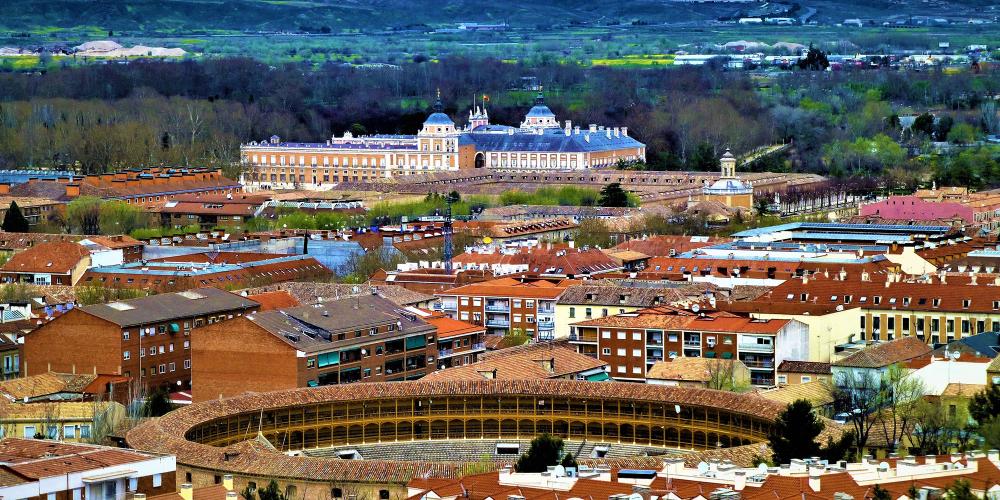
As visitors approach the museum, they're greeted by the imposing façade of the bullring. The 'Puerta de Cuadrillas', or the entrance for the bullfighting teams, serves as the gateway to the museum, immediately immersing guests in the world of tauromaquia.
Upon entering the museum, visitors are transported back in time. The collection housed within these historic walls is one of the most comprehensive in Spain, offering a detailed look at the evolution of bullfighting from its earliest days to the present. The museum's exhibits are thoughtfully curated to provide a holistic view of bullfighting culture. Visitors can marvel at an impressive array of matador costumes, known as 'trajes de luces' or 'suits of lights'. These ornate outfits, adorned with intricate gold and silver embroidery, showcase the pageantry and artistry associated with the spectacle.
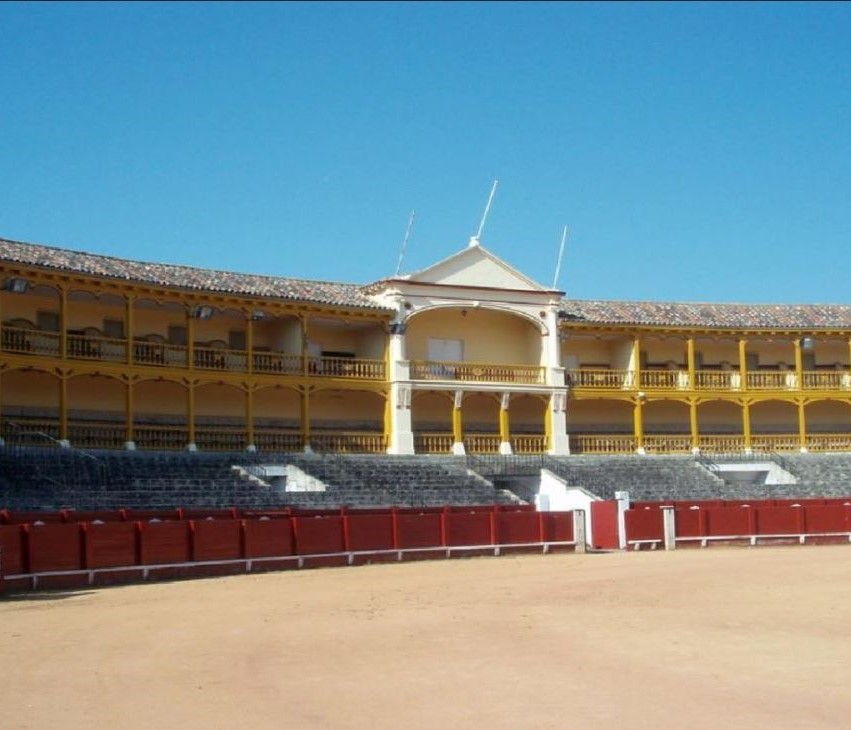
One of the most intriguing displays features the protective gear worn by picadors, the mounted horsemen who participate in bullfights. The heavy leather chaps and reinforced saddles offer a tangible sense of the dangers faced by both man and horse in the ring.
A particularly noteworthy exhibit showcases a pair of drums that date back to the 18th century. These instruments, which miraculously survived a fire that once ravaged the building, serve as a poignant link to the bullring's earliest days. The museum doesn't shy away from the controversial aspects of bullfighting. Instead, it presents the practice as a complex art form, deeply ingrained in Spanish culture. Displays explain the different stages of a bullfight, the roles of various participants, and the intricate rules and traditions that govern the spectacle.
Visitors can learn about famous matadors who have graced the Aranjuez ring, their triumphs and tragedies immortalised in photographs, posters, and personal effects. The museum also delves into the breeding of fighting bulls, explaining how these animals are specially raised for the ring and the characteristics that make a bull suitable for bullfighting.
While the museum primarily focuses on bullfighting, it also provides valuable insights into the broader cultural context of the practice. Exhibits touch on the influence of bullfighting on Spanish art, literature, and music. Visitors can see how this controversial tradition has inspired painters like Goya and Picasso, writers such as Hemingway, and countless other artists across various mediums.
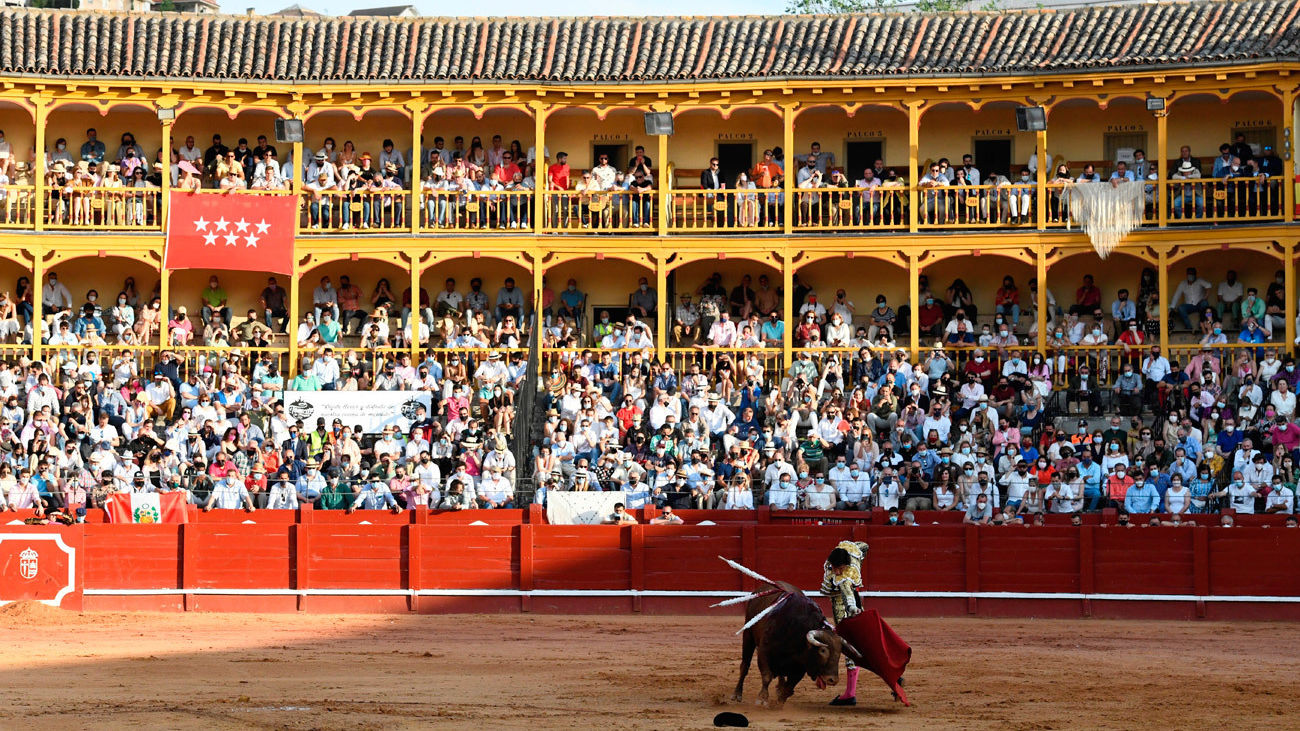
The museum also explores the role of bullfighting in local festivities and its importance to the economy of Aranjuez and other Spanish towns. This broader perspective helps visitors understand why, despite growing opposition, bullfighting remains an integral part of Spanish cultural identity for many.
Like many historical landmarks, the Plaza de Toros of Aranjuez has faced challenges related to maintenance and preservation over the years. However, recent efforts have been made to restore and preserve both the bullring and its museum, recognising their cultural and architectural importance. These restoration efforts have not only ensured the structural integrity of the building but have also allowed for the expansion and improvement of the museum's facilities. Today, the Aranjuez Bullfighting Museum stands as a well-maintained tribute to a controversial yet undeniably significant aspect of Spanish heritage.
For those seeking a more in-depth understanding of the museum and its contents, guided tours are available. These tours offer visitors clear explanations of the bullring's architecture, the various rooms within the complex, and the functions of the professionals involved in a bullfight. Tour guides also provide historical context, sharing stories about famous bullfights that have taken place in Aranjuez and explaining how the tradition of bullfighting has evolved over time. These guided experiences can greatly enhance a visitor's understanding and appreciation of the exhibits, regardless of their prior knowledge of bullfighting.
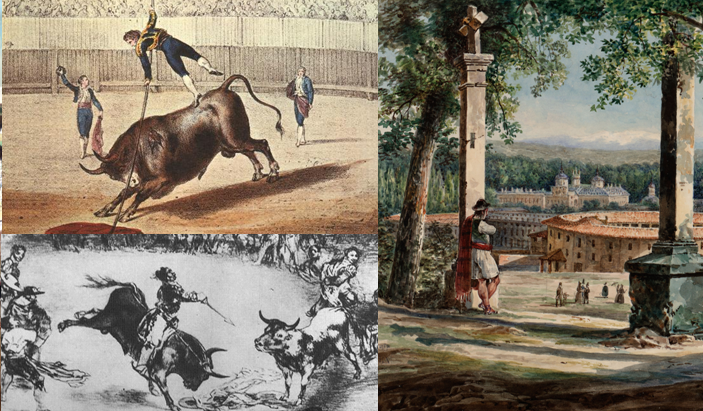
It's impossible to discuss the Aranjuez Bullfighting Museum without acknowledging the controversy surrounding bullfighting itself. While the museum presents bullfighting as an art form and cultural tradition, it also provides an opportunity for visitors to reflect on the practice's ethical implications.
The museum doesn't shy away from the debate surrounding bullfighting. Instead, it presents information that allows visitors to form their own opinions. This balanced approach makes the museum an interesting destination not only for bullfighting enthusiasts but also for those who are critical of the practice or simply curious about its place in Spanish culture.
While the Bullfighting Museum is undoubtedly a highlight, Aranjuez itself offers much more for the curious traveller. The city, a UNESCO World Heritage site, is renowned for its royal palace, beautiful gardens, and rich history. Visitors to the museum can easily extend their cultural exploration to include these other significant sites.
 5
Like
Published at 12:16 AM Comments (0)
5
Like
Published at 12:16 AM Comments (0)
The Sistine Chapel of San Antonio de los Alemanes - Madrid
Friday, March 21, 2025

For those who find themselves wandering through the bustling Gran Via Avenue in Madrid, it's all too easy to miss the unassuming exterior of a building that harbours one of the city's most splendid surprises. Concealed behind a modest façade on a quiet corner lies the Church of San Antonio de los Alemanes, often hailed as the "Sistine Chapel of Madrid." This small yet remarkable church offers visitors an unexpected journey into the brilliance of Baroque art and history.
A Historical Glimpse
San Antonio de los Alemanes's origins date back to the 17th century, when it was originally founded as a hospital for Portuguese nationals during the period when Portugal was under Spanish dominion. Following Portuguese independence, the church was rededicated to serving German-speaking pilgrims, leading to its current name—Church of Saint Anthony of the Germans.
The church stands as a testament to centuries of religious and cultural shifts in Spain. Over time, the relatively austere exterior has managed to shield a lavishly decorated interior that tells stories of faith, miracles, and historical legacies.
Stepping Inside: An Artistic Revelation
Once inside, one can instantly understand why the church is referred to as Madrid's Sistine Chapel. The interior boasts a domed ceiling and walls sumptuously adorned with a series of frescoes that capture the eye and spirit. These vibrant artworks depict scenes from the life and miracles of St. Anthony of Padua, a Franciscan saint born in Lisbon in 1195.
Among these masterpieces, the fresco of St. Anthony takes centre stage. He is magnificently portrayed kneeling on a cloud, arms open wide to receive the Child Jesus and the Virgin Mary. The level of detail and the emotional intensity captured in this scene is nothing short of awe-inspiring.
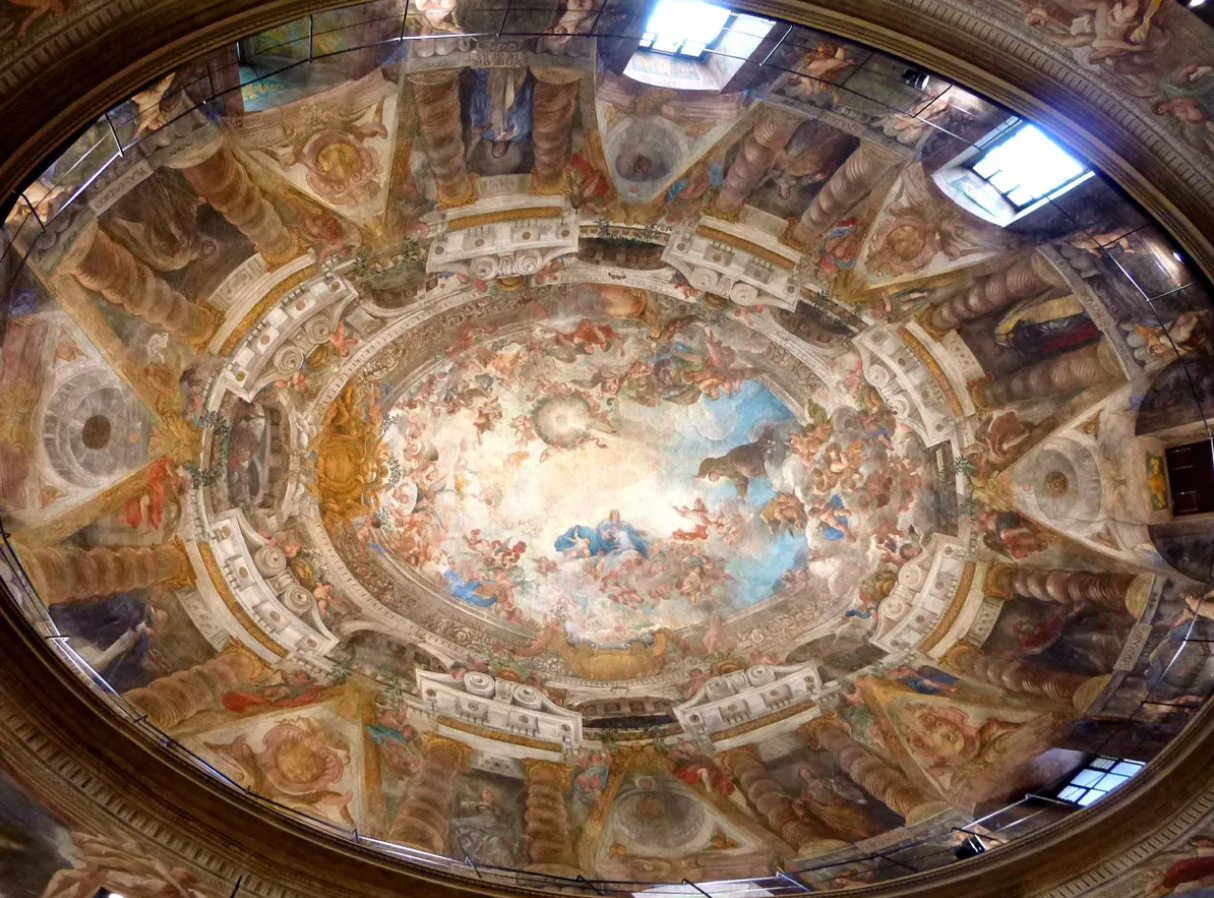
An Artistic Collaboration
The frescoes that engulf the church's interior were brought to life by the collaborative efforts of several artists, based on sketches by the Italian painters Coloma and Mitelli. The actual painting commenced around 1662 and involved the hands and visions of Carreño de Miranda and Francisco de Rizzi, commissioned by King Felipe IV of Spain. The dedication and talent poured into these works have rendered the church a visual symphony of colour and form, arresting in its magnificence.
A Layered Tapestry of Saintly Narratives
The spectrum of frescoes does not end with the central depiction of St. Anthony. The upper levels of the church's walls portray various miracles attributed to the saint. Each scene is a window into an episode that illustrates divine intervention and the saint's boundless compassion. Below these celestial narratives, one can find portraits of several saintly kings from history, creating an intricate mosaic of inspiration and reverence.
The Crypt: A Silent Echo of the Past
Beneath the church lies a crypt, adding another layer to the fascination held within this historic site. This crypt contains several niches where members of the Spanish royal family have been laid to rest, some of which date back to the Middle Ages. In addition to the royal occupants, there are also niches that hold the remains of children and a few unknown bodies, enveloping the space in an aura of mystery and quietude.
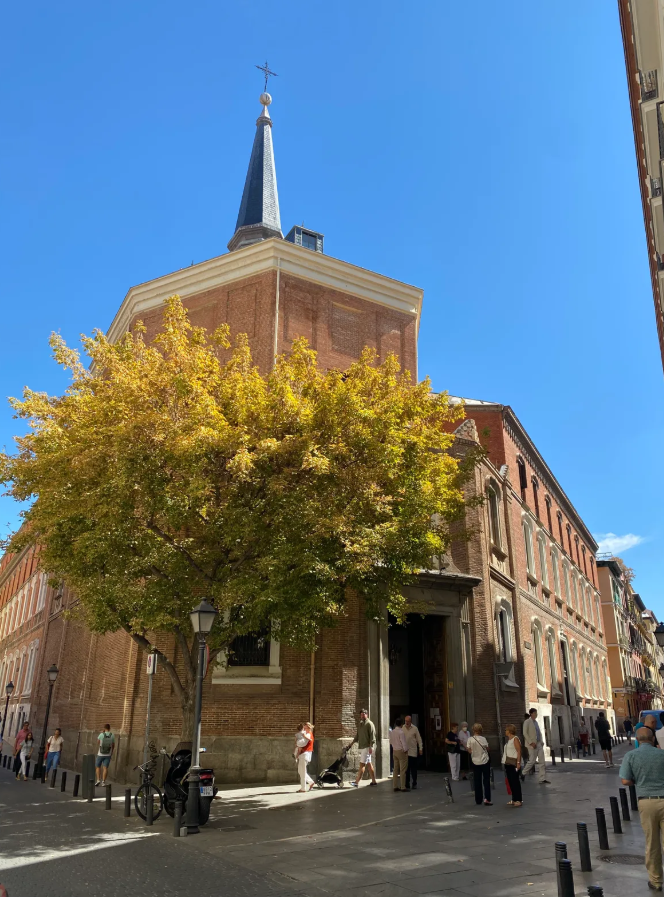
Visiting the Sistine Chapel of Madrid
For those inclined to uncover the depths of Madrid's history and artistic heritage, a visit to San Antonio de los Alemanes is a must. Conveniently located near the Gran Via tube station, it is easily accessible yet delightfully secluded from the usual tourist trail. From Gran Via, take Valverde Street and then the third street on the left, Calle Puebla, where this hidden gem awaits.
The church not only offers a feast for the eyes but also a contemplative space where visitors can reflect on the stories and artistry that have been preserved through the ages.
To make the most of your visit, here are a few tips:
- Transport: The nearest tube station is Gran Via, making it readily accessible by public transport.
- Location: From Gran Via, take Valverde Street and turn onto the third street on the left, Calle Puebla.
- Best Time to Visit: While the church is relatively quiet throughout the day, visiting during weekdays can offer a more peaceful experience.
San Antonio de los Alemanes stands as a custodian of some of Madrid's finest baroque art and historical narratives. Whether you are an art enthusiast, a history buff, or simply a curious traveller, the church provides an enriching experience that melds the sacred with the artistic in the most splendid fashion. Next time you find yourself in Madrid, step off the beaten path and uncover the splendour that lies within this modest yet extraordinary sanctuary.
 4
Like
Published at 11:04 PM Comments (0)
4
Like
Published at 11:04 PM Comments (0)
Experience the Magic of Cherry Blossoms in Valle del Jerte, Spain in 2025
Saturday, March 8, 2025
As we usher in the warming temperatures of spring, nature begins to awaken and showcase its glorious beauty. One of the most captivating spectacles of this season is undoubtedly the cherry blossom, and for those in Spain, the Valle del Jerte in Extremadura is the destination to catch this vibrant display. Known for its incredible scenic beauty, the valley comes alive in waves of pink and white blooms each spring, set against the dramatic backdrop of the Sierra de Gredos mountains. Whether you’re interested in a leisurely walk, an adventurous hike, cycling, or horseback riding, Valle del Jerte offers an idyllic springtime experience. Here’s everything you need to know for your visit to Spain’s cherry blossom haven in 2025.
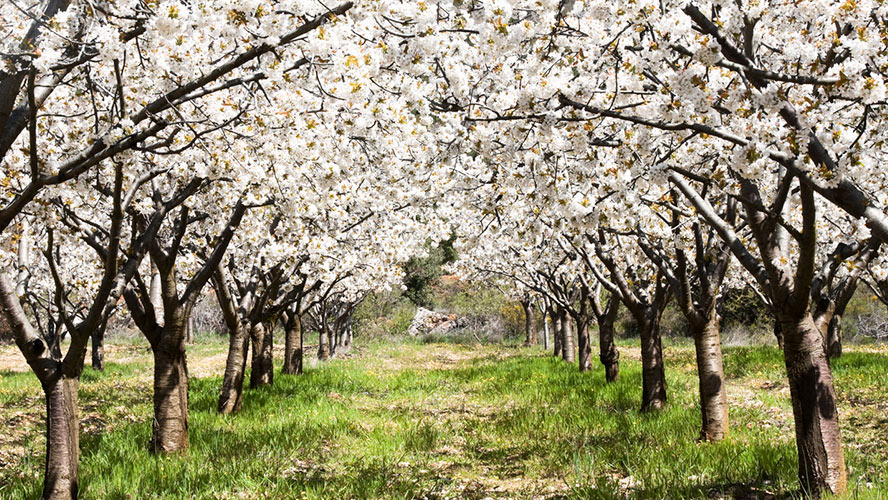
Understanding Cherry Blossoms
Cherry blossoms, often called “flor de cerezo” in Spanish, originate from cherry trees, which are famed for producing the succulent, red cherries we enjoy. However, it’s essential to note that different cherry tree varieties exist; some are cultivated mainly for their delectable fruit, while others are cherished for their ornamental blossoms. These delicate flowers range in shades of pink to purple, creating a visually stunning scene when they bloom.
Symbolism of Cherry Blossoms
Cherry blossoms hold profound cultural significance across various countries. They frequently symbolise the beauty of new beginnings and rejuvenation that come with spring. However, their brief blooming period, lasting only about two weeks, serves as a poignant reminder of the fleeting and transitory nature of life.
When Do Cherry Blossoms Bloom in Spain?
Typically, cherry trees in Spain commence their blooming period towards the end of March and early April, although this can vary depending on weather and environmental conditions. According to the tourism board in Extremadura, predicting the exact blooming dates for 2025 is challenging at this point; however, it's expected that the cherry blossoms in the Jerte Valley will be in full bloom between 20th March and 10th April. Generally, the flowering period spans around ten days, making late March the likely optimal time to plan your visit to witness these natural wonders.
The Best Spot to See Cherry Blossoms in Spain: Valle del Jerte
Without a doubt, Valle del Jerte is the most renowned location in Spain for viewing cherry blossoms. Nestled in the province of Cáceres, Extremadura, this picturesque valley is home to over 1.5 million cherry trees. Each year, this spectacular natural event draws thousands of visitors from across the globe, establishing the valley as one of Extremadura’s prime tourist attractions. During peak bloom, the valley is transformed into a breathtaking expanse of pink and white petals. For those seeking a more serene experience, weekdays are the best time to visit, as the crowds tend to be smaller.
The Valle del Jerte Cherry Blossom Festival
Every spring, as the cherry trees burst into bloom, the region of Valle del Jerte celebrates with a series of special events. The Fiesta del Cerezo en Flor, or Cherry Blossom Festival, is a highlight of this season, providing a glimpse into the region’s rich cultural and culinary traditions. Visitors can engage in various activities that showcase the local customs, gastronomy, and ways of life.
Particularly notable during the festival are the visits to traditional wine cellars, forges, and wine presses, which for a few days are presented as they were decades ago. These historical sites played significant roles in the daily lives of the valley’s inhabitants. Additionally, some houses that have preserved the area's traditional architecture open their doors to offer a unique look at how generations past lived.
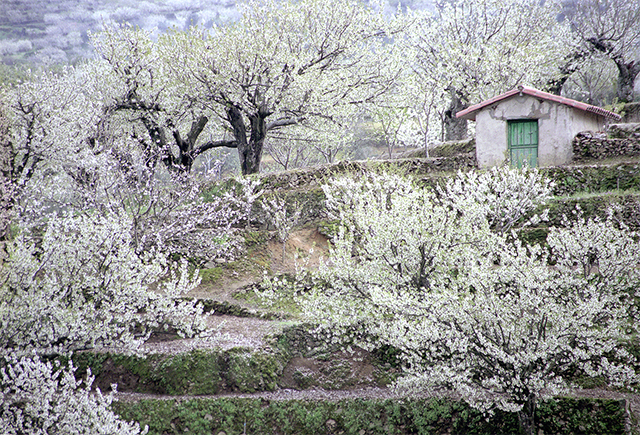
Visiting Valle del Jerte
To fully experience Valle del Jerte, consider exploring its charming towns and villages such as Casas del Castañar, El Torno, and Cabezuela del Valle. These visits offer diverse opportunities to appreciate the breathtaking cherry blossoms from different vantage points. One of the iconic sights is the statues of naked men gazing over the valley from the El Torno viewpoint.
It’s important to note that cherry blossoms don’t bloom uniformly across the valley. Trees at lower altitudes bloom first, while those situated at higher, cooler elevations follow later. Thus, travelling through the valley during the blossom season can provide a continuous display of floral beauty.
How to Plan Your Trip
Planning a trip to Valle del Jerte isn’t just about timing; accommodation and travel arrangements are equally important. Here are a few tips to ensure a seamless visit:
-
Book in Advance: Given the popularity of the cherry blossom season, make sure to book your accommodation well in advance. Look for places that offer scenic views of the valley to enhance your experience.
-
Travel During Off-Peak Times: If possible, plan your visit for weekdays to avoid the weekend crowds. This can give you a more peaceful and enjoyable experience.
-
Hire a Local Guide: A local guide can provide valuable insights into the best spots for viewing cherry blossoms and share fascinating stories and historical facts about the area.
Embrace the Experience
Valle del Jerte offers more than just a visual feast of cherry blossoms; it’s an opportunity to immerse yourself in the natural beauty, cultural richness, and historical depth of the region. Whether you’re wandering through quaint villages, enjoying the Cherry Blossom Festival, or simply taking in the serene landscapes, this destination promises an unforgettable springtime adventure.
A trip to Valle del Jerte in the spring of 2025 promises a remarkable encounter with nature’s splendour. The stunning display of cherry blossoms, combined with the cultural richness of the region, makes it a must-visit destination for anyone seeking to embrace the rejuvenating spirit of spring.
 0
Like
Published at 12:37 AM Comments (0)
0
Like
Published at 12:37 AM Comments (0)
Spam post or Abuse? Please let us know
|
|